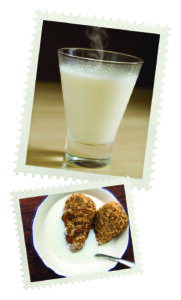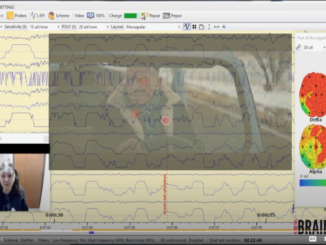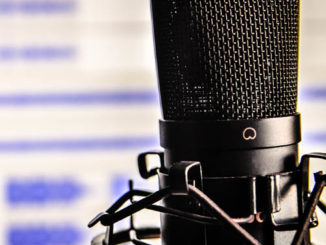
By Rob Volpe
Insights Consultant to Dig Insights
San Francisco, California
rob@robvolpe.expert
 How does warm milk on breakfast cereal sound? Or chocolate chip cookies with a heavy sprinkle of salt? Maybe you’d enjoy a glass of raw milk with the cookie?
How does warm milk on breakfast cereal sound? Or chocolate chip cookies with a heavy sprinkle of salt? Maybe you’d enjoy a glass of raw milk with the cookie?
As insights professionals, we’re supposed to stay neutral, in a nonjudgmental place, practicing unconditional positive regard for participants in our research projects. But let’s be honest. It’s hard. When I think of all the situations I’ve been in when I wanted to say “oh gross” but chose to say “hmmm, interesting” instead, or the times I’ve wanted to criticize someone’s opinions about current events but kept mum; in each of these cases, I’ve had to fight the impulse to be judgmental.
Even if I don’t verbalize judgment, body language can give me away. A slight arch of the eyebrow, a squint of the eyes, or a pursing of the lips are all minute “tells” to the person I am speaking with that I don’t agree or am uncomfortable with their point of view. When I sense that I’m not agreeing with something and my being curious is getting overwhelmed by my bias, prejudice, and past experiences, I realize I must lean into dismantling my judgment.
As I shared in my book Tell Me More About That: Solving the Empathy Crisis One Conversation at a Time, dismantling judgment is the first of the “5 Steps to Empathy™.” This isn’t the type of judgment that’s about making a decision. We still need that. Instead, it’s about resisting the urge to do the things I struggled with above. Namely, to cast aspersions or allow negative thoughts to convolute our perception of another person. In research, we need to stay open and curious, always seeking to understand—never to be judgmental.
I’m not going to mislead you into thinking that this is easy. To truly dismantle judgment means confronting our biases, stereotypes, prejudices, and lived experiences that influence our thinking. To do that, we need to have self-awareness.
stereotypes, prejudices, and lived experiences that influence our thinking. To do that, we need to have self-awareness.
Don’t worry if you aren’t connected to your self-awareness. Tasha Eurich, an organizational psychologist who conducted a series of surveys on self-awareness, writes in her book Insight, only 10–15% of people are truly self-aware, while a larger percentage believe they are but have a way to go. Part of self-awareness is meta-cognition of your thoughts. It’s thinking about what you are thinking and exploring that. This is what we need to tap into in order to dismantle judgment.
Part of the dismantling comes when we recognize judgmental thoughts as they come out of the recesses of our mind and intercept them before they escape our mouths or turn into actions. Gaining awareness of those thoughts is the first step in turning them around.
 A shift in perspective toward one of curiosity is also helpful. When I first heard that putting warm milk on breakfast cereal was typical for a large part of the population in South Africa, I could have easily thought “eww, gross” and thought it was just weird. While planning for a visit to South Africa for a co-creation workshop, I had come across that data in some background materials the client had shared. Had I seen my face at that moment, perhaps I would have done a double-take—not believing what was before me.
A shift in perspective toward one of curiosity is also helpful. When I first heard that putting warm milk on breakfast cereal was typical for a large part of the population in South Africa, I could have easily thought “eww, gross” and thought it was just weird. While planning for a visit to South Africa for a co-creation workshop, I had come across that data in some background materials the client had shared. Had I seen my face at that moment, perhaps I would have done a double-take—not believing what was before me.
I had a split second to respond. The thought was about to whiz out of my mind, alchemize into words, and slip out of my mouth like a venomous vapor. In this case, I caught that thought before the alchemy began. Instead of saying something I would regret, I turned it around to look at it from a lens of curiosity. “What prompts that behavior?” “Is it all cereals or just certain ones?” “What would that even taste like?” The question that has the potential to unlock any innovation project: “What could make it better?”
There is a neurological space between being presented with a stimulus and reacting to it. It happens in an infinitesimally small amount of time. John “Gucci” Foley, a former Blue Angels pilot in the Navy, and host of the Glad to Be Here podcast, shared how critical it is for the Blue Angels pilots to be aware of that gap and be ready to respond at a moment’s notice, given the speed and tight formations they fly. A pause can be deadly. Just like if you fail to prevent the alchemy of biased or judgmental thoughts, bad things can happen.
 What’s interesting is that the gap between stimulus and reaction isn’t fixed. It can be expanded, and since I’m guessing none of us are going to be flying in tight formation with the Blue Angels anytime soon, I suggest trying to take a “Curious Breath” to increase the space to help you shift gears from reacting to responding.
What’s interesting is that the gap between stimulus and reaction isn’t fixed. It can be expanded, and since I’m guessing none of us are going to be flying in tight formation with the Blue Angels anytime soon, I suggest trying to take a “Curious Breath” to increase the space to help you shift gears from reacting to responding.
I learned about the Curious Breath from life coach and podcast host Rick Clemmons when he interviewed me for an appearance on his show. It’s a simple trick that actually works and is one of the impactful ideas audiences take away from my empathy presentations.
Here’s what you do: when presented with a stimulus, instead of reacting instinctually, take a big, long inhale—the type that fills your lungs and presses on your ribs. Hold it at the top for a couple of beats, then exhale. When I guide an audience, I’m doing a roughly four-count inhale. Hold at the top for a two-count (I’m not sure the lung capacity of the group, and they didn’t sign up for a Pranayama breathing class, so I’m mindful of people’s ability), then exhale for a four-count—the whole time, focusing on the feeling of expansion in the ribs.
Repeat.
Go ahead, give it a try. I’ll wait. Inhale 2–3–4. Hold 1–2. Exhale out of the mouth 3–4. Then repeat on your own.
What’s happening while you do this variation of box breathing is that your vagus nerve is stimulated by the deep breathing,

which then tells your parasympathetic nervous system that it’s ok to relax out of the “fight or flight” response to a calmer state. It’s in this calmer state that you are able to determine a response rather than merely react (i.e., fight).
This Curious Breath is helpful in most any situation—moderating a focus group or IDI, dealing with clients, direct reports, or people in your personal life.
If you aren’t able to dismantle your judgment, take time to reflect on the source of your judgment. How might you reprogram your biases or attitudes due to past experiences so that you approach the situation differently in the future? Often, just bringing your attention to it will be sufficient to alert you the next time it comes forward to alchemize. That’s when you can summon the small dose of courage to shut down the alchemy and make a different choice—a choice to explore with curiosity.
During the prep for this project, I became fascinated with the idea of warm milk on cereal. Instead of rejecting the idea out of hand, I opened myself up to the possibilities found in Step 4: Integrate into Understanding. This is about making room in my head that there are other ways to view the world—or eat breakfast cereal. It’s okay to be curious about it, rather than dismissive, and incorporate that perspective without letting it replace my own.
Before departing for my above-mentioned project in South Africa, I bought some Weetabix, one of the best-selling cereals there, and gave it a try with “warm” milk. I always think it’s important to understand the product/service I’ll be researching whenever possible. The Weetabix biscuits dissolved quickly, and I ended up with something like porridge or oatmeal. Not bad, but even though I’ll personally stick with cold milk on cereal (what my cultural perspective would consider normal), I’ll have a better understanding of this option going into fieldwork.
On the ground in Johannesburg, we finally got the chance to explore the question further with the locals who participated in the study. My fellow Think Global Qualitative colleague, Corette Haf, based in South Africa, was able to provide useful context about the market and helped me understand how different South Africa’s history was and the role that has played in the economic development of the population.
Keeping my perspective locked on a lens of “curious,” we moved into fieldwork. The motivations for warm milk on cereal were quickly revealed by the respondents. One was the desire for something warm to combat the cold overnight air in their homes. Another was the sense that warm food kept them feeling full longer. Finally, some shared that they had dental issues that made soft food more desirable to consume than anything with a crunch.
All of this made sense to me since I was able to keep my judgment at bay. I can imagine what it’s like to want soft food, a warm belly, and to ward off the chill in the morning air. I used the respondents’ stories to bring the research insights to life in the report and insights video. Had I not kept my judgment dismantled and been willing to integrate into my understanding, I would not have been able to formulate the insights the clients needed to develop a winning product.
So, remember, take a curious breath, have self-awareness and an open mind, and practice, practice, practice to strengthen your empathy skills.




